Source: The Conversation (Au and NZ) – By Susan Hazel, Senior Lecturer, School of Animal and Veterinary Science, University of Adelaide
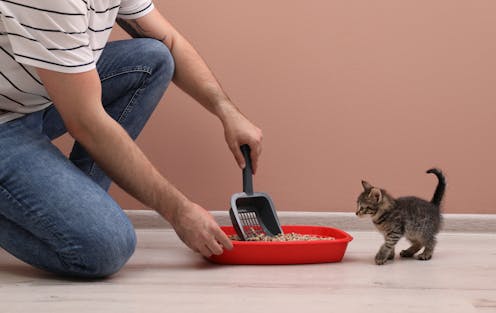
Shutterstock
Does your cat kick litter all over the floor? What does this mean and how can you stop it?
Despite being skilled predators, cats are also mesopredators, meaning they are both predators and prey. Unlike apex predators at the top of the food chain with no natural predators, cats are in the middle, preying on smaller animals and being preyed upon by larger animals.
Because they are also a prey animal, cats developed instinctive behaviours to protect them from nearby predators. One of these behaviours is digging in the litter tray. Cats likely dig and cover their waste to hide their presence from visiting predators, who might be attracted by the scent.
Covering waste may also help cats to avoid parasites.
Read more:
One in three people are infected with _Toxoplasma_ parasite – and the clue could be in our eyes
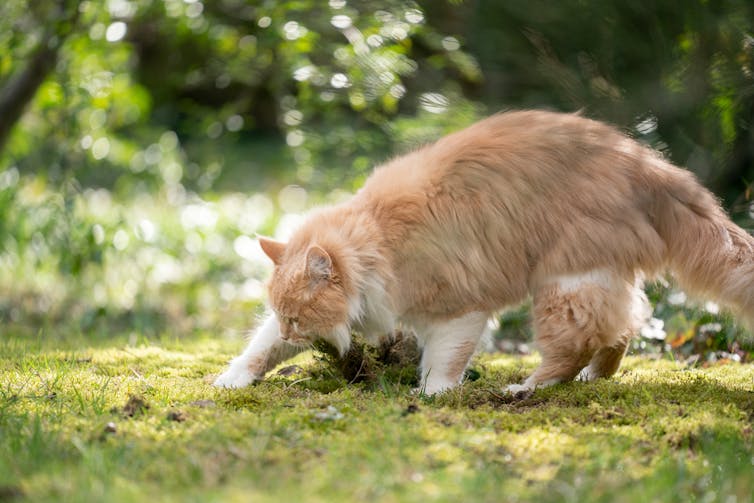
Shutterstock
Cat waste also acts as an important communicator to other cats in the area, signalling how long ago a cat came through, a female that may be in heat or many other messages a cat may leave behind.
Which brings us to: what can you do about it, so your cat isn’t kicking litter everywhere?
In terms of changing the cat’s behaviour, the short answer is: nothing. Digging is a natural and important behaviour and trying to interrupt that may cause stress and confusion for your cat.
In fact, cats who dig in their litter box for longer probably like their litter box more and are less likely to have problems with pooing or weeing.
Inappropriate pooing or weeing, especially outside the litter tray, can indicate urinary problems in cats. In a survey, of Australian cats around 20% pooed or weed outside the litter tray.
There are some simple solutions in setting up litter trays that can keep you and your cat happy – and litter in the tray.
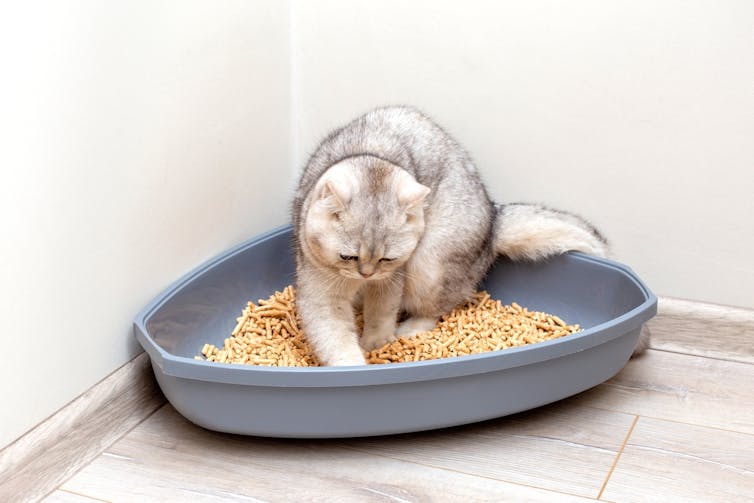
Shutterstock
1. Litter hygiene (you, not them)
Have you ever had to pull a gross bit of food from the sink? Your cat may feel similarly about placing their paws in a dirty litter box.
Your cat’s hesitance to use their dirty litter tray may be leading them to hedge their bets, sticking to the edge, where the litter is less soaked, and kicking litter all over the floor.
The solution: Clean the tray regularly. Ideally, remove solid waste as it happens or once a day, and completely change over the litter every few days or before the top layer becomes soaked.
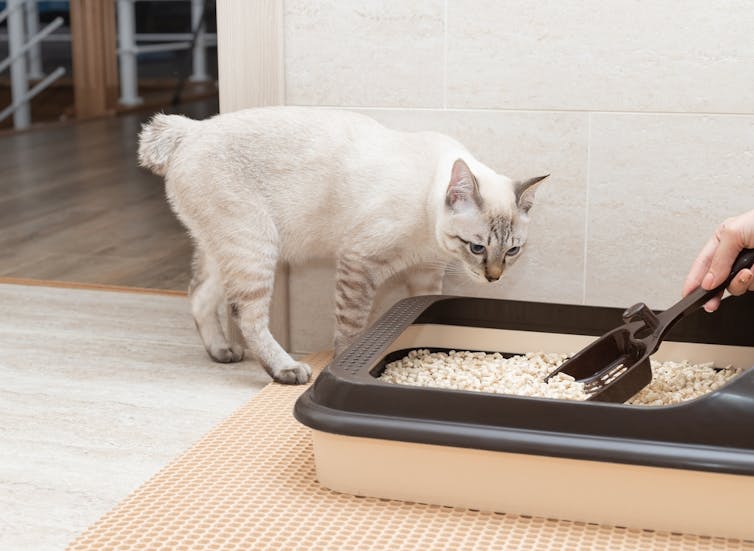
Shutterstock
2. Overfilled litter
When it comes to filling the litter tray, more isn’t always better.
For cats with health issues such as arthritis, pain or restricted mobility, an overfilled litter box means trying to balance on an unstable mound of litter. And the more litter in the tray, the more litter that can end up on the floor.
Even cats without health issues may feel the need to dig deeper to find a stable surface to squat on. This means more litter on the floor both because of the increased volume and the cats extra efforts in digging.
The solution: Fill the tray with around 2-4cm (1-2 inches) of litter.
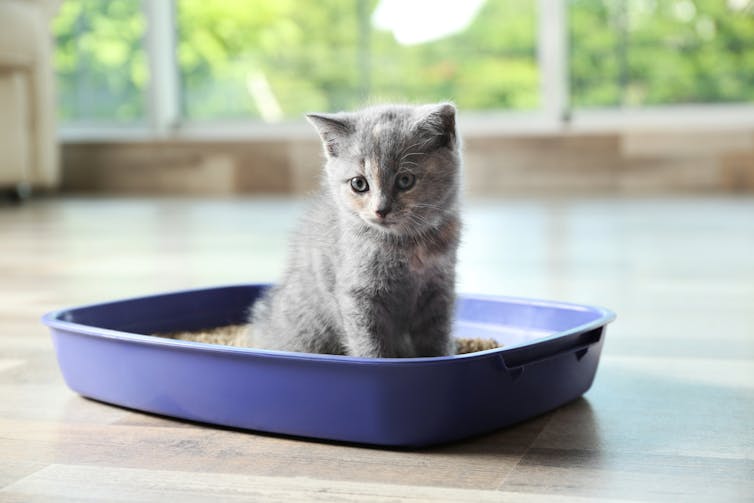
Shutterstock
3. Litter box number and choice
The general rule of thumb is one litter tray per cat plus one for the household. These should be placed around the house if possible, in places where your cats feel safe to go about their business.
Many litter boxes are too small. If your cat is constantly kicking litter around, try investing in a larger box. A covered litter box may be a solution, but cats are individuals too and some don’t like being cooped up when trying to poo or wee.
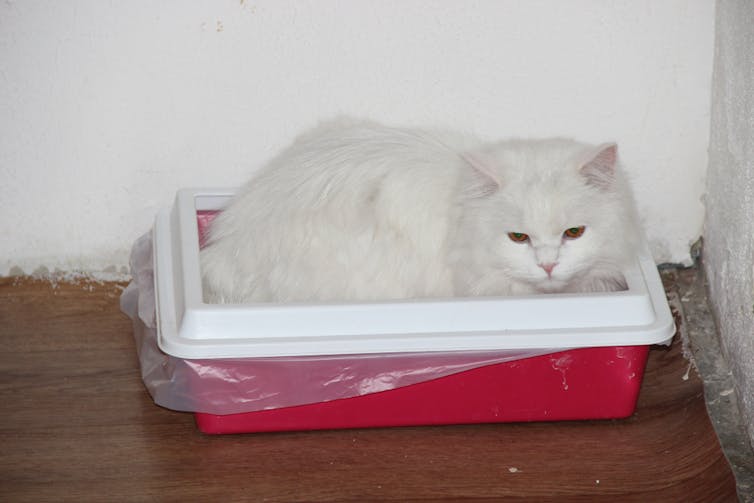
Shutterstock
You can find trays with higher sides or an additional edge that hangs over and stops some of the litter from flying.
If you can’t find something large enough or suitable, you can try making your own from something as simple as a plastic washing tub.
A great way to work out which type of litter box your cat prefers is to place two different types side by side and see which one they use the most.
4. Wipe your paws
If it’s not any of the above, its possible your cat just has a real zest for kicking up litter.
If the litter on the floor is a real problem for you, you can place specific mats around the litter or in the doorway to the room(s) where the litter is.
These mats help to collect the litter as the cat walks over them, containing that kicked up mess to a smaller area and stopping litter from being tracked into your other rooms.
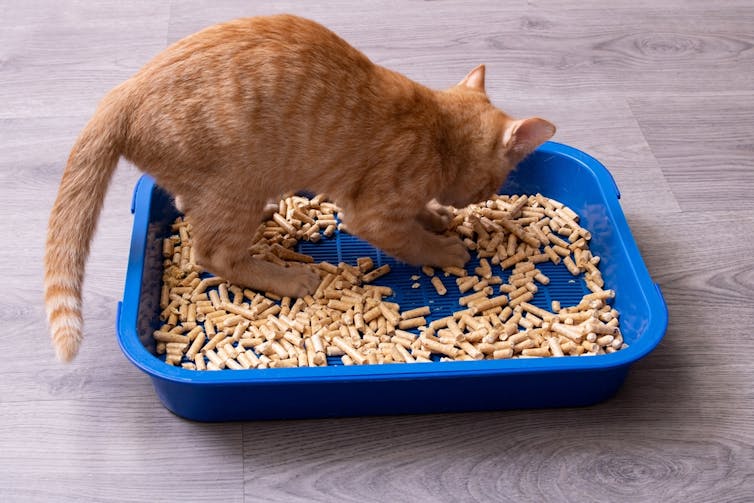
Shutterstock
Toileting outside the litter box may indicate a behavioural or medical problem. If making the changes suggested above doesn’t help do consult your veterinarian.
If your cat is squatting frequently without much result, you should consult your veterinarian as quickly as possible.
Read more:
Curious Kids: How can you tell if your cat is happy and likes you?
![]()
Susan Hazel is affiliated with the Dog & Cat Management Board of SA and RSPCA SA.
Julia Henning does not work for, consult, own shares in or receive funding from any company or organization that would benefit from this article, and has disclosed no relevant affiliations beyond their academic appointment.
– ref. Why does my cat kick litter all over the place? 4 tips from cat experts – https://theconversation.com/why-does-my-cat-kick-litter-all-over-the-place-4-tips-from-cat-experts-186928








